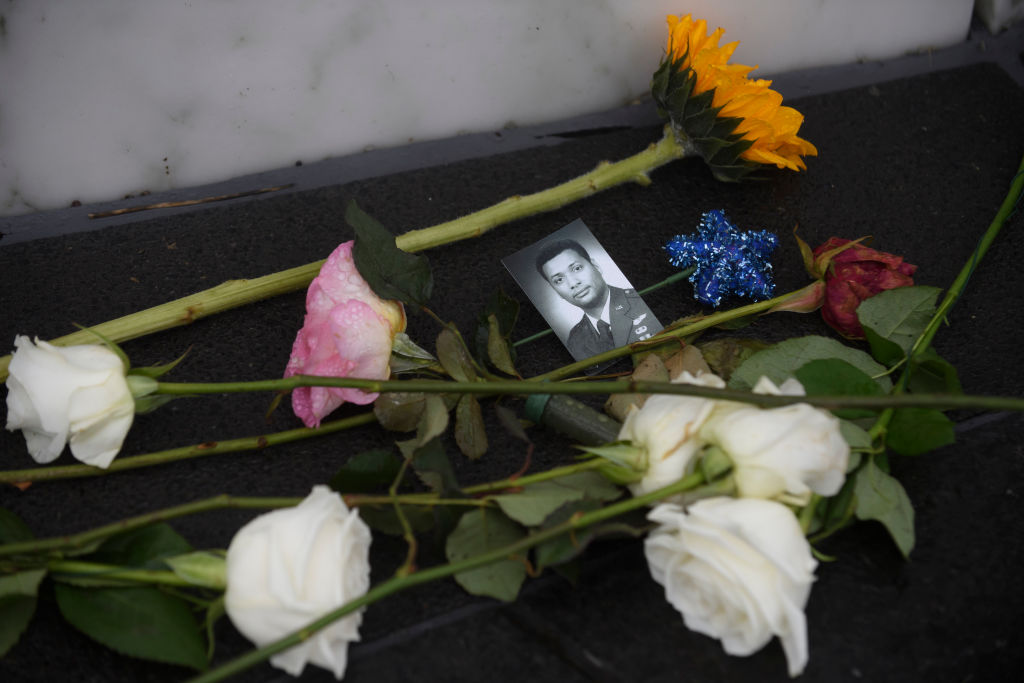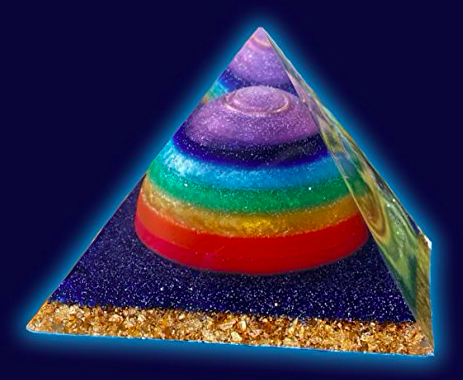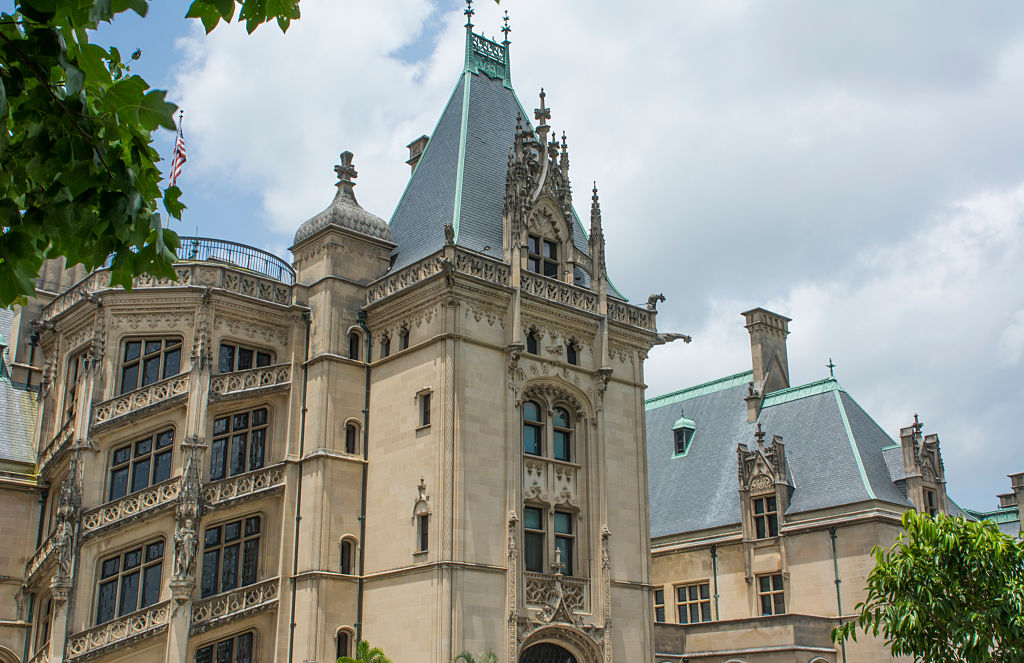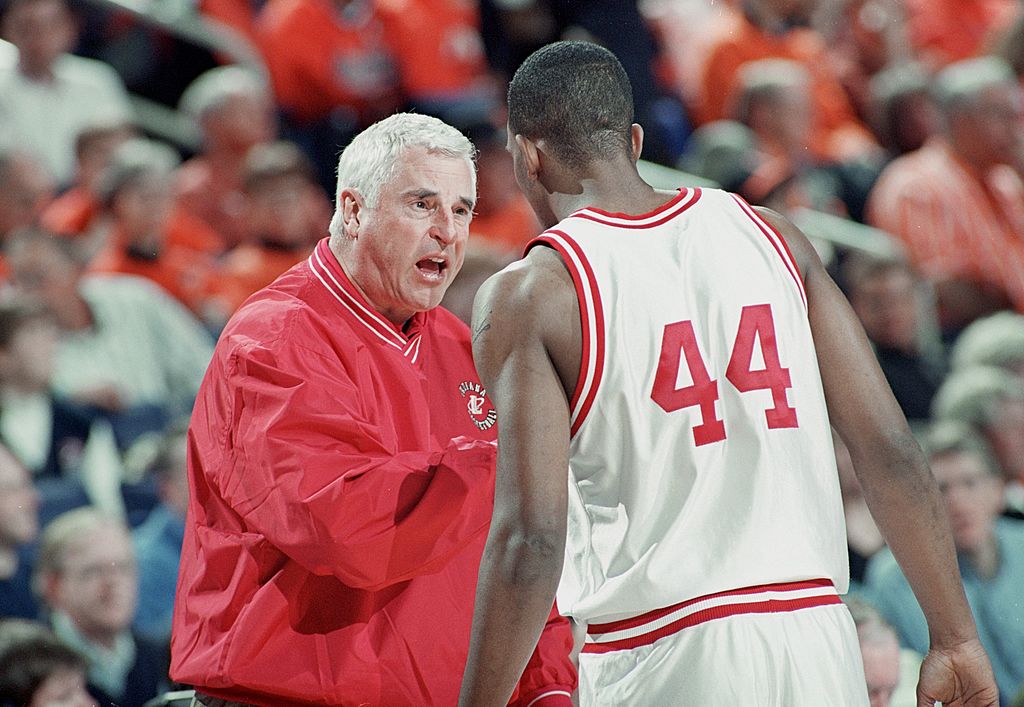It's coming.
Shanksville, U.S.A.

The two decades since the 9/11 attacks have revealed that the American spirit is not completely gone in the heartland.
Instead of attending the commemorative observances at any of the three sites where the 9/11 terror attacks took place, President Joe Biden will be in Alaska on September 11 this year. It is the first time an American president will not appear at the locations of the largest terrorist assault in American history.
This is of a piece with the forgetting of 9/11, about which I have written previously. Ultimately, the retreat of the attacks into the mists of history is inevitable, and it will certainly mean that future generations will think differently, or not at all, about that day.
But as I noted a year ago, it’s not the forgetting per se that is of interest. It’s the rapidity and the completeness of that forgetting, and the fact that a large portion of the country never forgot. They still see the day as yet another marker of the U.S.’s moral depravity, which has never been the case previously with any foreign attack.
This year, I want to focus on a different, yet related, aspect of the 9/11 attacks: their material and symbolic elements. The two are interconnected, to be sure, but they can be disentangled and understood separately. Both are of great importance, but only the symbolic side—the myths of the American nation that were in play in the wake of the attacks that I described in my 2015 book—has any hope of outliving those who knew and remember those lost in the tragedies. It is the waning, at least among a portion of the population, of the power of that mythological body of symbols and narratives that makes it possible for 9/11 to disappear as quickly as it is disappearing.
The terrorists attacked the parts of the country that are most distanced from the deep myths of the country. They struck, or intended to strike, its material elements: the signs of our commercial power and our ability to extend political and military influence around the globe. United Flight 93 went down in Shanksville, Pennsylvania, a little borough of a few hundred people, not by the terrorists’ designs but due to a group of courageous passengers who stormed the cockpit in an unfortunately unsuccessful effort to retake the plane.
But the plane crash was not without meaning. It signified something of primary importance. For both the terrorists and their intended targets in New York and Washington, D.C. have arguably been at war with Shanksville for a very long time.
All the American Shanksvilles
Shanksville represents the American heartland, the common people of this country. It speaks to their common values; the unapologetic way they evince a love of the traditions of their families, their regions, and their country; and their disinterest in the jet-setting, cosmopolitan life embraced in the places of political and cultural power and preference for the simple mores and beliefs that have been in place since our country’s beginning (and even earlier).
Above all, the people in Shanksville, and those in myriad other places, do not apologize for believing that this material life is not the only, or even the most important, one and that the traditional moral codes handed down for generations are the means to attain that more important spiritual life, their very lifeblood. Those people desire nothing more than to protect and propagate that faith, which is disdained and often outright despised in the cities.
Much research shows that serious religious faith, especially Christian faith, is considerably more common in rural America than in the cities. It is also more pronounced in the American heartland generally—that is, through the Midwest and South—than it is on the coasts, where a growing proportion of Americans who have no religious faith reside.
The 9/11 terrorists were, intentionally or not, aiming at the heart of secular America. Some noticed this at the time and criticized secularism as a cause of the attacks. I make no claims about their cause but merely point out that there were two Americas before the attacks, divided most essentially by questions of religiosity, and there still are two Americas today.
The Broken Covenant and Post-Spiritual America
A great American scholar, Robert Bellah, wrote a book some 50 years ago titled The Broken Covenant. In it, he painted a compelling portrait of the American character, the American nation, and the things that hold it together and the things that endeavor to tear it apart. He was writing in the aftermath of the contentious 1960s, when contradictions and conflicts presented grave threats to its perpetuity, much like what’s happening to it presently.
Bellah wrote about the American self-conception as a covenant nation, created with a view of our elect, favored status among nations but also of our vast responsibility to live up to the demands made on us by that covenant. Previously, he had presented a case that America has a civil religion, which he described as “a genuine apprehension of universal and transcendent religious reality as seen in or, one could almost say, as revealed through the experience of the American people.” In this view, America is a chosen people, favored by God and therefore called to an ongoing mission of rigorous moral practice and constant striving toward self-perfection as our part in the covenant. Bellah was critical of some of American history and believed that reasoned criticism of it was good and necessary. But he rejected the view of those radical critics of American society who claimed that our mythical understanding of our place in history was nothing but falsehood, that is, that this myth was a myth in the sense of an untruth. Such myths are essential components in the self-understanding of a people.
America was founded on that myth, and we need it, Bellah argued. It contains deep truths and traditions that we require, and without which we cannot survive. He rejected the totalizing secularism that was even then becoming increasingly dominant in the elite classes. He wrote that we needed to reinvigorate our covenant with God and our sense of communal and moral unity.
I disagree with Bellah, a man of the political Left, on some specifics of what the American myth entails. He believed, for example, that socialism was the best way toward accomplishing the requirements of justice given in the covenant, and, given my reading of the history of socialism, I am skeptical, to put it mildly. But I agree with him that we must have a national myth. As Peter Schaffer wrote, “We need a story to see in the dark.” National myth is that story, our story.
Another writer on the Left, the French philosopher Jean Baudrillard, writing only a year after the attacks, analyzed the events of 9/11 that, somewhat backhandedly, touches on the same spiritual ground described by Bellah. Baudrillard’s essay, “The Spirit of Terrorism,” constituted in the view of many American readers a provocative attack on core values of the contemporary United States. The terrorists, he suggested, knew in advance that, as a military strike, their dreadful acts were doomed in advance. Nothing could stand—at least not in 2001—against the military might of the U.S. Many were particularly outraged that Baudrillard insinuated that the sensational act of mass murder had in fact been “dreamed” for decades by Americans themselves in the form of our spectacular action movies, many of which projected the spectacle of mass terrorism inside the U.S. to eager American cinema goers.
But overlooked for the most part in the howls of shock, real or feigned, was a core of truth in Baudrillard’s argument: the terrorists had moved to a different game. The U.S. and the West, in their contemporary materialist and secularist incarnations, understand all social exchange and conflict as revolving around very specific kinds of stakes. Who will exit from exchanges with more material gains? Who can summon more mechanized power to vanquish adversaries in a crude game of production and capital? Military victory, in this sense, is but an effect of superior material output. These were the relevant questions the post-spiritual U.S. posed in its interactions with opponents.
But the terrorists, in Baudrillard’s view, returned the game to the field of what he called the symbolic. By this he meant the period in human history when societies were oriented on exchange, not merely of the material, but, more essentially, of the spiritual and otherworldly. The values of the irreligious market society are subsumed under the dollar sign. Those of the pre-modern world, especially that of what Baudrillard refers to as “the primitive,” which also includes the pre-modern West, revolve around notions of heroic self-sacrifice for goods untouchable in this world.
There are few notions more confounding to the contemporary secular American mind than that of martyrdom. Our New Atheist podcasting class laughs hysterically at the idea of early Christians being given the choice to denounce their faith and live or be executed. Yet scholars have described how compelling such actions would have been to potential converts in the ancient Near Eastern world.
Mohammed Atta and his group were not only willing to die for their beliefs; they acted in full knowledge that success in their mission required their demise. To have survived would have been utter failure. It goes without saying that one must, as a Christian, reject their vision of God’s plan. But what does contemporary secularized America offer in the way of a symbolic world that could compel its faithless citizenry to face such a fate with such equanimity?
Baudrillard is certainly right, perhaps without precisely realizing it, in recognizing that in purely spiritual terms the terrorists had made a wager that secular America was wholly unequipped to counter. He argued that the terrorists attacked the “zero-death system” of American materialism in sacrificial terms to which it could not respond. The stakes were changed and raised once the terrorists placed their own deaths into the game. Their act demonstrated the weakness of the secular, materialist American obsession with controlling death through ever more advanced technical inventions that prolong life. And it scandalously calls to mind what he believed is a fact few of us are willing to acknowledge: that we have wished for this kind of spectacular, cataclysmic event (while watching its cinematic simulation in a dozen action films) as an escape from the tentacles of the materialist system to which we pledge our allegiance. In other words, even those without faith among us want to find their way back to the symbolic, to spirit, even if, per Baudrillard, they—we—cannot do so.
The Cross
We cannot do so? In the book I wrote nearly a decade ago about the crash of Flight 93 and its commemoration, I described the ways in which rural American faith informed the response to the disaster. Most of those stories were never well-known, and they are essentially completely forgotten today. Here is just one particularly resonant and important example, which I offer to readers who believe, as I do, that Baudrillard was premature in his account of the death of American spirit.
The day after the crash in Shanksville, something of a small city of a few hundred people sprang into existence on the hillside overlooking the crater. This city was populated by a revolving team of search and recovery workers, police, agents of various government agencies, and media. Two citizens of this new city, Rick Lohr, the Director of the Somerset County Emergency Management Agency, and Bill Baker, the 911 Addressing Specialist for that same agency, assembled what became known as the “straw memorial” at the command center of the rescue mission. In their account, this began with something like a dozen bales of straw as a base to support flowers, flags, stuffed animals, candles, poster boards, and other items left by inhabitants of the temporary city on the hilltop. As the memorial items grew, so too did the number of bales of straw. Within a few days of the crash, families of the passengers began to arrive in buses escorted by state troopers, leaving personal items at the straw memorial.
A large flag was mounted at the site, as might well be expected. Then, pastor James Vandervort of the Christian Missionary Alliance Church, along with a few of his congregants, took a wooden cross they had constructed and decorated with a white cloth up to the site to post. In Vandervort’s account of the event, there was a brief conflict as to whether it would be permitted. State police supported the erection of the cross while FBI agents at the site initially balked on the grounds of religious diversity, telling Vandervort that this Christian symbol might be read as exclusionary by visiting passenger family members who were not Christian.
In short order, the foundational American religious sensibility won the day over a commitment to a by-the-book secular public policy. The FBI agents relented and permitted the cross to be erected. It stood at the temporary memorial site for a decade until construction of the permanent memorial got underway. Dare I suggest that it served as a reminder of the covenant Bellah described?
Last year, I ended on a bleak note about the country’s failure to keep the deep meaning of 9/11 in our collective mind. But perhaps I was too ready to make a judgment based on what I was seeing in the media and from cultural elites. It seems clear that you would have to work hard to find much evidence of serious investment in the covenant myth Bellah describes in places like New York City or the nation’s capital, the heart of American wokeworld.
But the spirit is not gone in places like Shanksville. I spent a good deal of time in the little borough when I was working on my book and have not been back for several years now. But I live in central Pennsylvania, literally surrounded by Shanksvilles, and I have seen much empirical evidence of the same kind of spirit demonstrated by James Vandervort in mid-September of 2001. Belief in the covenant is still present here. Whether it will be sustained or allowed to fully extinguish is up to us, the residents of Shanksville, U.S.A.
The American Mind presents a range of perspectives. Views are writers’ own and do not necessarily represent those of The Claremont Institute.
The American Mind is a publication of the Claremont Institute, a non-profit 501(c)(3) organization, dedicated to restoring the principles of the American Founding to their rightful, preeminent authority in our national life. Interested in supporting our work? Gifts to the Claremont Institute are tax-deductible.
The rise of pills to curb obesity raises some serious questions about the medicalization of life.
When politics trumps basic humanity.
Feminism seeks the extinction of the kind of men who built the world.
Meditating on Italy’s cultural treasures can help stop our civilizational spiral.
The legendary basketball coach represented a vanishing type of American masculinity.






